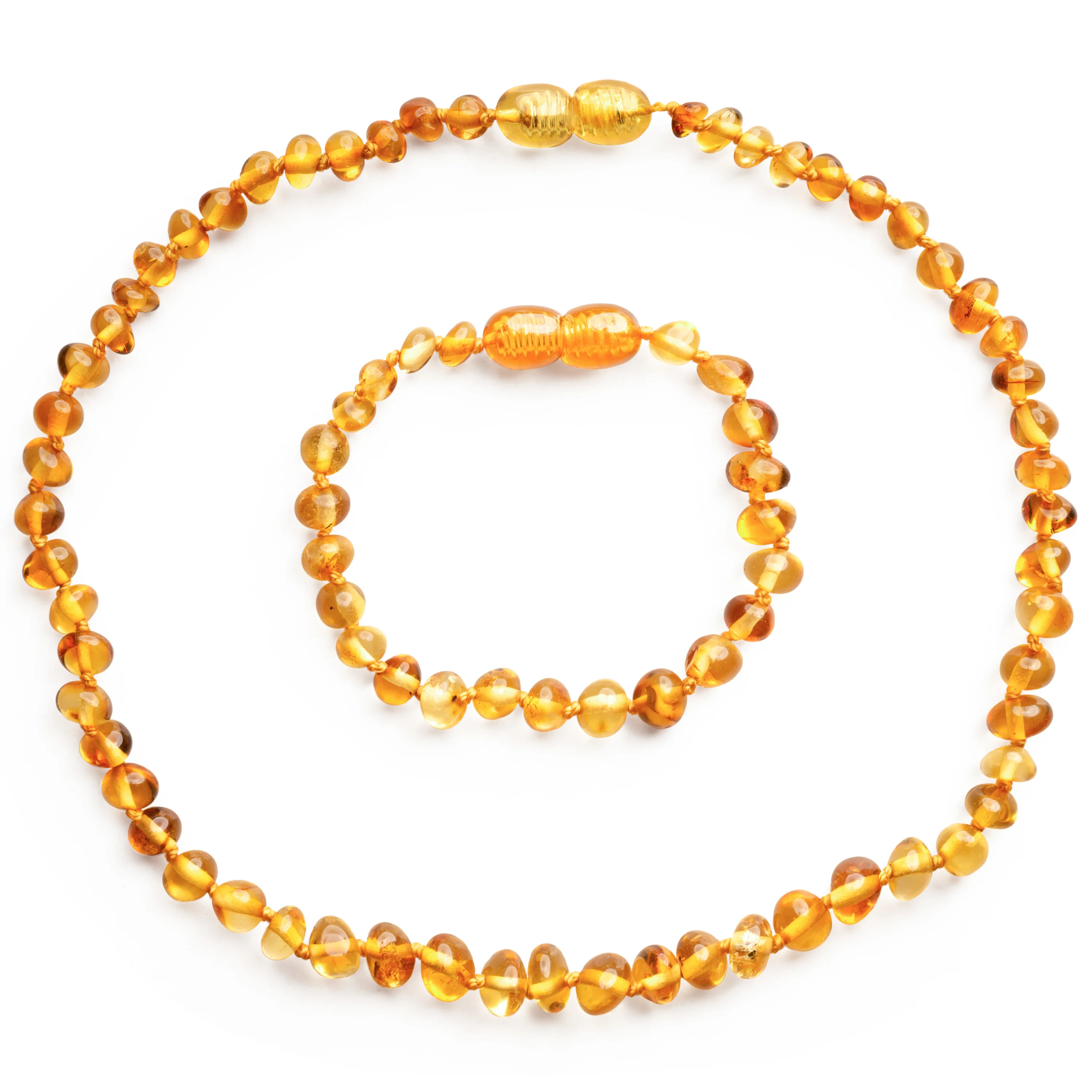Amber necklaces have been worn both by adults and children for thousands of years. Although many people still think that amber is a crystal or a mineral, the truth is it is actually a hardened resin that millions of years ago fell from the trunks of now-extinct trees, over time solidified and became the amber that we know. Amber first appeared around 35,000 years ago on the shores of the Baltic Sea and then was transported to other European countries through a trade route which is now known as the “Amber Road”. Back then this beautiful gem was mostly known for its medical qualities and was used to ease the pain and to cure various illnesses. Nowadays modern scientists were able not only to prove that this is true but also to uncover the real reasons behind the healing properties of amber.
Genetic Composition of Amber
Amber’s composition includes hydrocarbon, plant materials, succinic acid, and a mix of tree resins from different types of conifers, including now extinct Hymenaea species as well as the Pine genus. Many people think tree resin is the same thing as tree sap, but it is not. Tree sap runs through the inside of a tree while the resin is on the outside and its main function is to protect the tree from injuries and diseases. When the resin fell from the tree, it hardened and eventually became amber. But the process is not as quick as one might assume. In fact, it takes millions of years for the resin to become amber as resin must go through a long process of polymerization until it hardens. The age of all amber found in the world ranges from 30 to 90 million years – that’s how long it takes for the resin to turn into amber. Resin that is still in the hardening phase is called “Copal”.
The majority of Copal can be found in the Mesoamerican region since the matter comes from a tree named Protium copal, which is spread in the aforementioned area. A lot of sellers like to sell copal as amber, so the buyers should beware. The easiest way to check if the piece is amber or copal is by putting a drop or two of alcohol or acetone on the piece. If your piece becomes sticky, then it is not amber but copal.
The History of Amber Necklaces
Amber necklaces have existed for thousands of years. Back then many people, including the father of medicine, Hippocrates, believed that amber has magical healing powers. People would make necklaces for their children believing that amber helps to alleviate pain through the teething process. In other parts of the world, it was used as a medicine by grinding it into a powder and mixing it with other substances, like oils and honey. It was thought that amber can cure any disease, even asthma or epilepsy. Some people used amber as incense to disinfect affected areas.
But amber has other uses outside of its healing qualities. Just like nowadays, even in the past amber was used to make jewelry and to decorate palaces. The most famous example is Frederick I of Prussia who in the early 18th century commissioned an amber room to be built in his palace since he liked the color of amber.
Amber’s Healing Qualities from Scientific Point of View
Amber can be found in multiple parts of the world, but amber found in the Baltic Sea (and thus called Baltic amber) is the only type of amber to contain up to 8% of succinic acid. Succinic acid has analgesic properties and is anti-inflammatory. Plus, it has pain-killing properties which can cure people with respiratory problems. The succinic acid is on the surface of the stone and when the gem gets warm, it releases the acid.
To help teething babies, you only need to put a necklace from Baltic amber and make sure it has direct contact with the skin. When the acid is released, the skin absorbs it and then begins working its magic.
The effects that succinic acid has on human bodies have been researched and proven by the Nobel Prize-winning scientist, Robert Koch. He lived and researched succinic acid in the late 19th century.
Another important thing to remember is that amber is electronegative – it generates negative ionization which is known to have healing properties. That is another reason why amber, especially Baltic amber, is a perfect home remedy for a child going through the teething process. Moreover, it natural and non-toxic.
Conclusion
Baltic amber is a very pretty gemstone but that is not its only purpose. Amber has formed from a hardened resin that contains succinic acid. Succinic acid is known for its healing qualities. Although the reason behind amber’s healing properties was discovered recently, it has been used as a medicine for thousands of years. Necklaces made from amber are completely natural and non-toxic, and thus a perfect remedy for children going through the teething process. Therefore, a teething necklace made from Baltic amber is both fashionable and functional – perfect for children.




